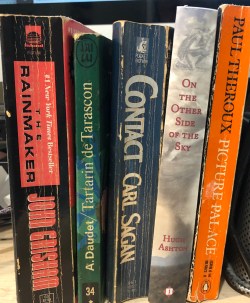(Actually the Pt XIII is probably an underestimate)
My latest book is published in three editions: hardback with a dustcover, paperback, and ebook. None of these editions was produced through KDP, and each has my own imprint (j-views Publishing) and ISBN assigned to me.
Why did I do everything through IngramSpark?
Typically in the past I have used IngramSpark (IS) for print editions, using InDesign as my interior formatter, and a mixture of Illustrator and Photoshop for the covers, using the IS templates to position the design elements correctly. Ebooks were a matter of exporting the InDesign text to DOCX format and then running the file through Vellum, a foolproof way of producing good high-quality ebooks from Word files (even if the formatting choices are a bit limited). EPUBs went to Smashwords for most ebooks (Apple, Kobo, etc.) and KDP for Kindle. A number of reasons for the change:
- IS has dropped the price of production for print and ebook editions to zero. It was never that expensive to start with, but zero is a nice round figure. Makes accounting simpler as well.
- I upgraded my computer recently, allowing me to use the latest version of InDesign. This allows for much better EPUB export, allowing me to use the same file for all editions, and keep the text in sync (InDesign also includes a conditional text feature, which makes it easy to maintain different editions in one file).
- Amazon now want an EPUB as the input to create their Kindle files. Need I say that Amazon’s rendering of EPUB files in Kindle is primitive and lags behind others (Apple, Kobo, etc.). This meant going in with Calibre and doing tweaks galore to the rather over-engineered files from InDesign.
The hardcover was a labour of love – I really didn’t expect to sell that many, but it went on sale on 1 October and it’s had a few buyers. I have set the release date for the ebook to 15 October, and for the paperback to 1 November.
And now…
Here’s how Barnes and Noble show it. All well and good. Correct release dates are being shown. Now let’s look at Amazon (US):

Amazon, on the other hand:
- seems unable to find the front cover for the hardcover edition
- the Kindle edition is not linked to the printed editions
But of course, in authorcentral, the story is completely different:

All right, I’ll give them 72 hours to try and get things right. But if B&N, who don’t pretend to be a technology company, can manage it, why can’t Amazon?
But when you look at this sort of thing, you have to question Amazon’s ability to compensate authors with the correct amount for their sales. When the two different parts of Amazon are clearly unable to talk to each other, you have to wonder.































